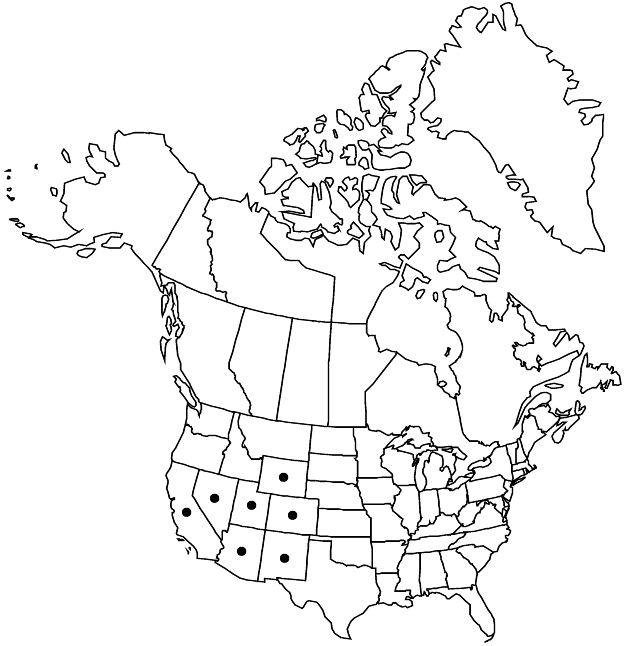Jamesia americana
Fl. N. Amer. 1: 593. 1840.
Stems 5–20(–40) dm. Bark exfoliating readily or tardily in reddish brown or blackish sheets, or gray to brown strips or strings. Branches spreading or ascending, often stunted and straggly; twigs ascending-strigose. Leaves: petiole (1–)2–18(–54) mm, ascending-strigose to canescent or sericeous; blade ovate or broadly ovate to obovate, rhombic, or suborbiculate, (0.7–)1.3–8(–10) × (0.5–)1–6.3(–8.5) cm, base cuneate to obtuse or rounded, usually asymmetric, margins crenate to dentate, (5–)9–51(–69)-toothed, apex obtuse to rounded, abaxial surface moderately to densely canescent or sericeous, adaxial sparsely strigose to glabrescent. Inflorescences cymose, usually 3–35-flowered, rarely 1–2-flowered on lateral branches; peduncle 0–30 mm, sparsely to densely strigose. Pedicels 1.5–8 mm, sparsely to densely strigose. Flowers: hypanthium 1.3–2 × 2.5–4.5 mm, sparsely to densely strigose; sepals 5, lanceolate to deltate-ovate, 1.5–7(–8) × 1.1–2 mm, margins usually entire, sometimes 2–3-lobed apically, apex acute to obtuse, abaxial surface sparsely to densely strigose; petals 5, white or pink, (4–)5.5–11(–11.5) × 3–4.5 mm, sparsely to densely strigose or canescent, especially distally; stamens 10; filaments (2–)2.7–10 × (0.2–)0.5–1 mm; anthers 0.7–1.1 mm; styles (2–)3–5, 3–8 mm. Capsules 3.5–5.5(–7) × 2–3.8 mm. Seeds 0.6–1 mm. 2n = 32.
Distribution

Ariz., Calif., Colo., N.Mex., Nev., Utah, Wyo., n Mexico.
Discussion
Varieties 4 (4 in the flora).
N. H. Holmgren and P. K. Holmgren (1989) recognized subsp. americana, which is widespread in the eastern part of the species' range, and included only var. americana and subsp. californica (Small) A. E. Murray in the western part of the range, with three allopatric varieties: macrocalyx, rosea, and zionis.
The Chiricahua Apache and Mescalero Apache of the southwestern United States and northern Mexico used the seeds as food (D. E. Moerman 1998). The species has been cultivated as an ornamental since 1862 (R. A. Vines 1960).
Selected References
None.
Lower Taxa
Key
| 1 | Bark exfoliating readily in reddish brown or blackish sheets; leaf blade margins crenate to dentate, teeth (13–)19–51(–69); inflorescences (7–)15–35-flowered; se Arizona, c Colorado, New Mexico, se Wyoming. | Jamesia americana var. americana |
| 1 | Bark exfoliating tardily in gray or brown strips or strings; leaf blade margins dentate, teeth (5–)9–27(–33); inflorescences (1–)3–12(–19)-flowered; s California, s Nevada, Utah. | > 2 |
| 2 | Petals usually pink, rarely white; sepals (1.5–)1.9–4(–6) mm; s California, s Nevada. | Jamesia americana var. rosea |
| 2 | Petals white or pinkish white; sepals (2.5–)3–7(–8) mm; Utah. | > 3 |
| 3 | Leaf blades (0.7–)1.2–3(–3.9) × (0.5–)0.8–1.8(–3.2) cm; n Utah. | Jamesia americana var. macrocalyx |
| 3 | Leaf blades (2.5–)3–5(–5.5) × (1.3–)2–4(–4.5) cm; sw Utah. | Jamesia americana var. zionis |